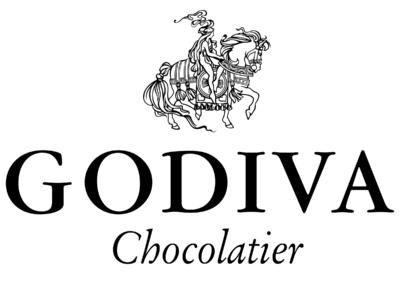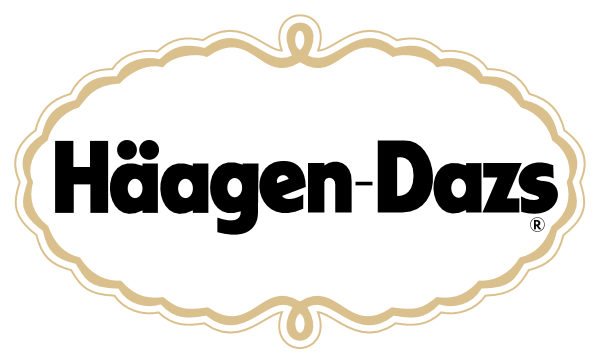this that this that
Brand Archetypes
The Lover
Attaining intimacy is important for this archetype who craves relationships, warmth, and connection in an effort to avoid being alone or unwanted.
What is the Lover Brand Archetype?
The Lover is the archetype that seduces your senses. This is the brand that promises pleasure. It fulfills desires.
Ignited by Passion, Defined by Desire
Lover brands are driven by the belief that life should be felt deeply, experienced sensually, and filled with moments of pure indulgence. They see the world as too often practical and utilitarian, and themselves as the antidote—the permission to experience pleasure, intimacy, and beauty. And they're not selling indulgence for its own sake, they're doing it because desire matters. Because pleasure connects. Because passion demands it. The mundane needs transcending.
Some examples of the Lover Brand Archetype
- Baileys
- Godiva
- Victoria's Secret
- Häagen-Dazs
The Psychology of The Lover Brand Archetype
Map this to the Enneagram and you get Type 2: The Helper, expressed through creating intimate connections and Type 4: The Individualist's appreciation for beauty and intense experience. The deep belief that connection, beauty, and sensuality make life worth living.
Lovers are fueled by a hunger for intimacy, pleasure, and aesthetic perfection. They believe that denying desire diminishes life, that sensuality is sacred, and that the best moments are the ones that make you feel intensely. They ask: "When did you last feel truly alive?" So they seduce. They indulge. They never stop pursuing pleasure.
This is why Victoria's Secret doesn't "sell lingerie," but rather, they sell fantasy, confidence, and the transformative power of feeling desirable. The annual fashion show wasn't about underwear functionality; it was spectacle, aspiration, and the promise that you too can feel that beautiful, that powerful, that desired. Similarly, Godiva creates an entire ritual around indulgence. The gold box, the Belgian heritage, the phrase "chocolate for the chocolate lover." Every detail reinforces that this is sensory experience.
The Lover Brand's Promise
Every Lover brand makes the same core promise: "With us, you'll feel alive," which is selling sensory pleasure and emotional intensity. That is, the indulgence, beauty, and desire you need to transcend ordinary existence.
Look at Baileys Irish Cream. They became the definition of liquid indulgence by positioning themselves as "the treat you give yourself," creamy, sweet, decadent, perfect for intimate moments or personal indulgence. The entire brand whispers permission: you work hard, you deserve this, feel the pleasure. They understand you're drinking Baileys for the sensory experience.
Or consider Häagen-Dazs, an ice cream brand that could have competed on flavors or price. Instead, they positioned themselves as sensual indulgence. Look at their "Dedicated to Pleasure" campaign featuring couples feeding each other ice cream in soft focus, making frozen dessert feel like foreplay. The name itself (completely made up, vaguely European-sounding) adds to the exotic allure. They're selling desire, not necessarily ice cream.
The Lover Brand's Core Values
Sensory Excellence: Lovers prioritize how things feel, taste, smell, look, and sound. Godiva's smooth chocolate texture, the way it melts, the rich aroma, every sensory detail is perfected. Victoria's Secret fabrics feel luxurious against skin. Baileys' creamy texture coats your mouth. Häagen-Dazs' dense, rich ice cream provides intense flavor. Sensory experience is the product itself.
Intimate Connection: Lovers create moments of closeness and desire. Victoria's Secret sells products designed to enhance intimacy and attraction. Baileys positions their liqueur for sharing with someone special or as a personal treat. Häagen-Dazs ads feature couples in intimate moments. Even Godiva, chocolate is the gift of romance, the Valentine's Day standard. The brands understand they're participating in relationships.
Permission for Indulgence: Lovers give permission to desire what you want. Häagen-Dazs' "Dedicated to Pleasure" explicitly tells you it's okay to pursue what feels good. Baileys calls itself "the treat" you give yourself, permission to indulge. Godiva positions chocolate not as guilty pleasure but as deserved luxury. In a culture of restraint and optimization, Lovers say: want it, have it, enjoy it.
Beauty as Essential: Lovers believe aesthetics matter profoundly. Victoria's Secret shows (at their peak) were theatrical celebrations of beauty. Godiva's gold boxes and ribbon are as important as the chocolate inside—the visual beauty enhances the experience. Häagen-Dazs packaging feels premium. Baileys bottle design is elegant. Beauty is central to pleasure.
Emotional Intensity: Lovers deal in feelings, not features. Victoria's Secret sells confidence and desirability. Godiva sells love and appreciation. Baileys sells self-care and intimate moments. Häagen-Dazs sells passion and indulgence. The emotional payoff is the actual product, the physical item is just the delivery vehicle.
The Lover Brand's Sub-Archetypes
While all Lovers share core values, they express them differently. Understanding these nuances helps brands fine-tune their positioning and messaging.
The Romantic: Relationship-focused and emotional, the Romantic sells connection and intimacy. Godiva operates as the Romantic with their chocolate as the language of love, the Valentine's gift, the "I'm thinking of you" gesture. Their entire brand is built on chocolate facilitating romantic connection. The Romantic's potential pitfall can be becoming saccharine or falling into cliché, or limiting yourself to one holiday (Valentine's Day).
The Sensualist: Pleasure-focused and indulgent, the Sensualist celebrates physical sensation and desire. Häagen-Dazs embodies the Sensualist with their "Dedicated to Pleasure" positioning, ice cream as a sensory experience, not just frozen dessert. Baileys also operates here, focusing on the creamy, smooth, indulgent sensation. The risk? Overplaying hedonism can feel empty or gluttonous rather than pleasurable.
The Seductress/Seducer: Confidence-driven and alluring, this sub-archetype sells desirability and attraction. Victoria's Secret lives in this territory. Their lingerie is designed to make you feel desired and confident. The brand (at its peak) was about transformation: put this on, feel powerful, feel beautiful. The trap can be crossing from seductive into objectifying, or building standards of beauty so narrow they alienate more than they attract.
The Aesthete: Beauty-obsessed and refined, the Aesthete celebrates visual and sensory perfection. Godiva sometimes operates as Aesthete with their attention to presentation: the gold box, the perfect chocolate shapes, the elegant stores. Everything must be beautiful because beauty enhances pleasure. The danger lies in aesthetics overwhelming substance, or beauty standards becoming precious and unapproachable.
Building an Authentic Lover Brand
Every Detail Must Seduce: Don't skimp on sensory experience. Godiva's packaging is as important as their chocolate. Victoria's Secret stores are designed environments with lighting, music, and scent that enhance the experience. Häagen-Dazs uses dense, rich ice cream because texture matters. Baileys' bottle feels substantial in your hand. Every touchpoint must deliver pleasure.
Price for Indulgence, Not Value: Lovers can't be budget brands. Häagen-Dazs costs more than regular ice cream because it's not regular ice cream, it's indulgence. Godiva is expensive because gifts of love should feel significant. Victoria's Secret positioned themselves as affordable luxury, not cheap, but accessible. Price signals that this is special, deserved, worth it.
Create Permission, Not Guilt: Fight the culture of optimization and denial. Baileys' "the treat you give yourself" explicitly counters guilt. Häagen-Dazs doesn't apologize for calories—they celebrate pleasure. Lover brands must help customers silence the voices saying "you shouldn't." You should. You're worth it.
Make Beauty Integral: Don't treat aesthetics as optional. Godiva's gold box isn't wasteful packaging—it's essential to the gift-giving experience. Victoria's Secret's pink branding isn't arbitrary—it creates a visual world of femininity and desire. Häagen-Dazs' sophisticated packaging separates it from kids' ice cream. Beauty is the message.
Sell the Feeling, Not the Features: Nobody reads ingredient lists when choosing Lover brands. Victoria's Secret customers don't analyze thread counts; they want to feel beautiful. Häagen-Dazs eaters don't care about fat content; they want intense flavor and creamy texture. Baileys drinkers don't study alcohol percentages; they want that smooth, creamy comfort. Lead with emotion.
Navigate Cultural Shifts Carefully: Lover brands often rely on cultural norms around beauty, desire, and indulgence—and those norms shift. Victoria's Secret struggled when cultural beauty standards evolved beyond their narrow definition. Häagen-Dazs must balance indulgence messaging with health-conscious consumers. Lover brands must evolve their expressions of pleasure without losing their essential promise.
The Lover archetype endures because it speaks to something fundamental: the human need for pleasure, beauty, connection, and the sensory experiences that make us feel truly alive. In a culture increasingly focused on optimization, productivity, and restraint, Lover brands offer permission to desire, to indulge, and to prioritize what feels good.
They remind us that life isn't just about function and efficiency. That pleasure matters. That beauty enhances experience. That we deserve moments of pure indulgence. And that the best memories are often the ones that engaged all our senses and made us feel intensely.
The Lover Connection Strategy
The lover’s way of connecting is by attracting others to themselves through their own attractiveness. They’ll reaffirm beauty everywhere, especially in people, and roll out the red carpet through the heart—think “rose petals leading to the bedroom."
The Lover Brand Voice
Sensual
Empathetic
Soothing
The Lover Brand Colors

Lover Brand Examples





